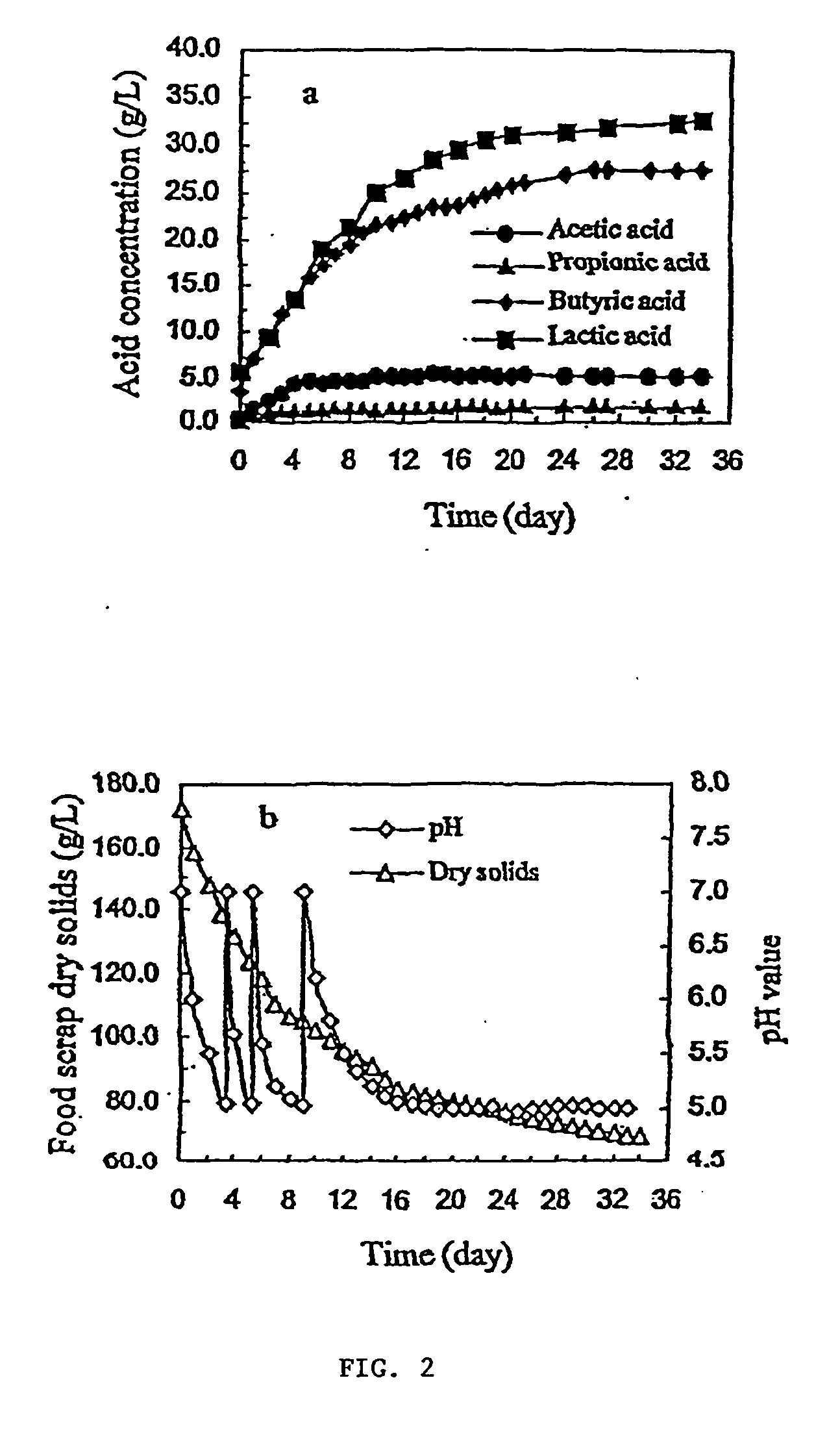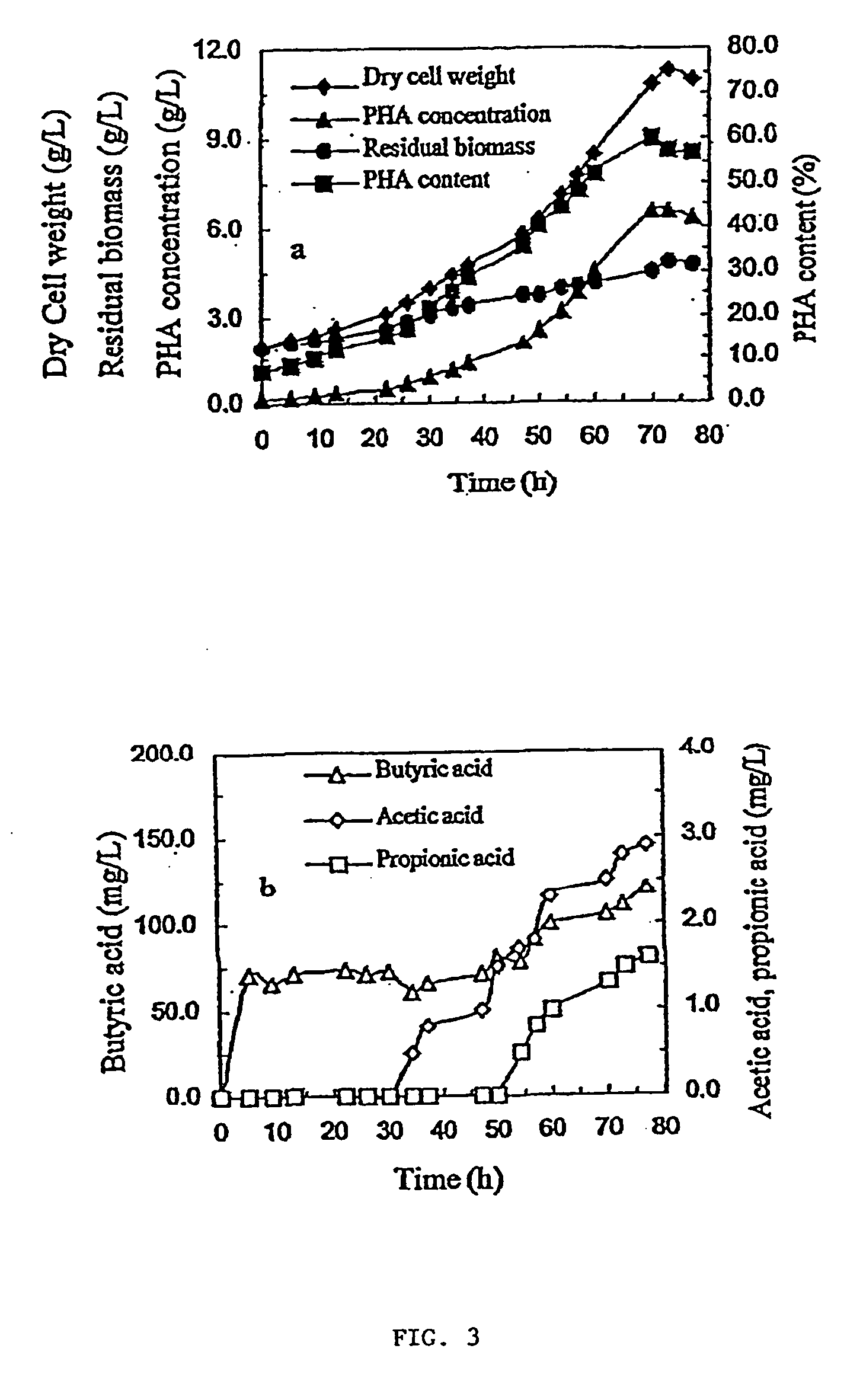Production of biodegradable thermoplastic materials from organic wastes
- Summary
- Abstract
- Description
- Claims
- Application Information
AI Technical Summary
Benefits of technology
Problems solved by technology
Method used
Image
Examples
examples
[0016] Food scraps were collected from a local canteen, mixed with water in 1:1 (w / w), and blended to slurry. Anaerobic digestion of solid waste was conducted at 35° C. in a 5 L reactor with 3 L working volume. An inoculum for food waste acidogenesis was prepared by keeping food wastes under anaerobic conditions. The inoculum (25-30%, v / v) was mixed with fresh slurry to start anaerobic digestion. The slurry pH was first adjusted to 7.0 with 6 M NaOH, and raised to 7.0 after the pH dropped to about 5.0. No further pH control was implemented after the anaerobic digestion was coupled with PHA production.
[0017]Ralstonia eutropha ATCC 17699 was used for PHA production. The strain was maintained by monthly subculture on 2.0%-agar slants (pH 7.0) containing (per liter): 5 g yeast extract, 2.5 g beef extract, 5 g peptone and 5 g (NH4)2SO4. The same nutrient-rich medium without agar was also used for seed culture. The seed was prepared in 2 L flasks containing 500 ml medium in a rotary shak...
PUM
| Property | Measurement | Unit |
|---|---|---|
| Biodegradability | aaaaa | aaaaa |
| Volatility | aaaaa | aaaaa |
| Mass transfer coefficient | aaaaa | aaaaa |
Abstract
Description
Claims
Application Information
 Login to view more
Login to view more - R&D Engineer
- R&D Manager
- IP Professional
- Industry Leading Data Capabilities
- Powerful AI technology
- Patent DNA Extraction
Browse by: Latest US Patents, China's latest patents, Technical Efficacy Thesaurus, Application Domain, Technology Topic.
© 2024 PatSnap. All rights reserved.Legal|Privacy policy|Modern Slavery Act Transparency Statement|Sitemap



